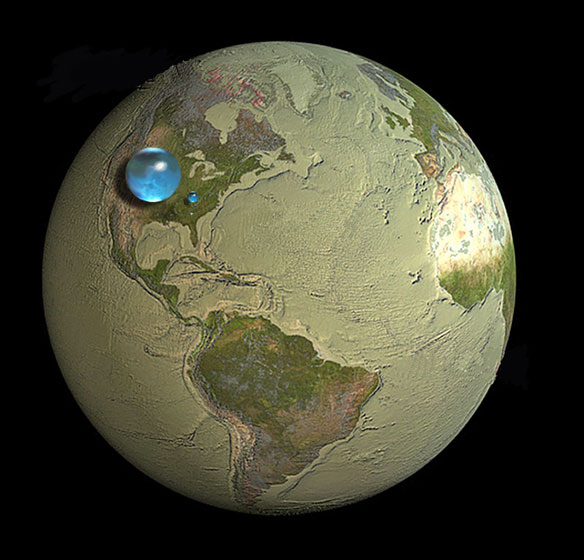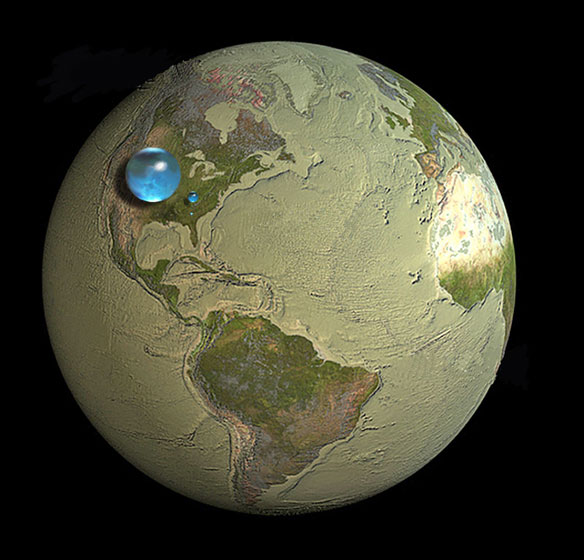
Photograph: © SAF
Excerpts;
Massive extraction of groundwater can resolve a puzzle over a rise in sea levels in past decades, scientists in Japan said on Sunday.
Global sea levels rose by an average of 1.8 millimetres (0.07 inches) per year from 1961-2003, according to data from tide gauges…
Past and future contribution of global groundwater depletion to sea-level rise, AGU
As people pump groundwater for irrigation, drinking water, and industrial uses, the water doesn’t just seep back into the ground, it also evaporates into the atmosphere, or runs off into rivers and canals, eventually emptying into the world’s oceans.
How much water is there on, in, and above the Earth?

What would it look like if all of Earth’s water was brought together in a single sphere? It might be smaller than you would imagine.The image above shows all the world’s water, from bodies of water, glaciers, soil, water vapor and even living things, in a sphere with a diameter of 860 miles. The volume of the sphere would equal 332.5 million cubic miles. Image source: USGS Credit: Howard Perlman, USGS; globe illustration by Jack Cook, Woods Hole Oceanographic Institution (©); Adam Nieman.
Excerpts, by USGS;
As you know, the Earth is a watery place. But just how much water exists on, in, and above our planet?
About 70 percent of the Earth’s surface is water-covered, and the oceans hold about 96.5 percent of all Earth’s water. But water also exists in the air as water vapor, in rivers and lakes, in icecaps and glaciers, in the ground as soil moisture and in aquifers, and even in you and your dog.
Water is never sitting still, though, and thanks to the water cycle, our planet’s water supply is constantly moving from one place to another and from one form to another…









